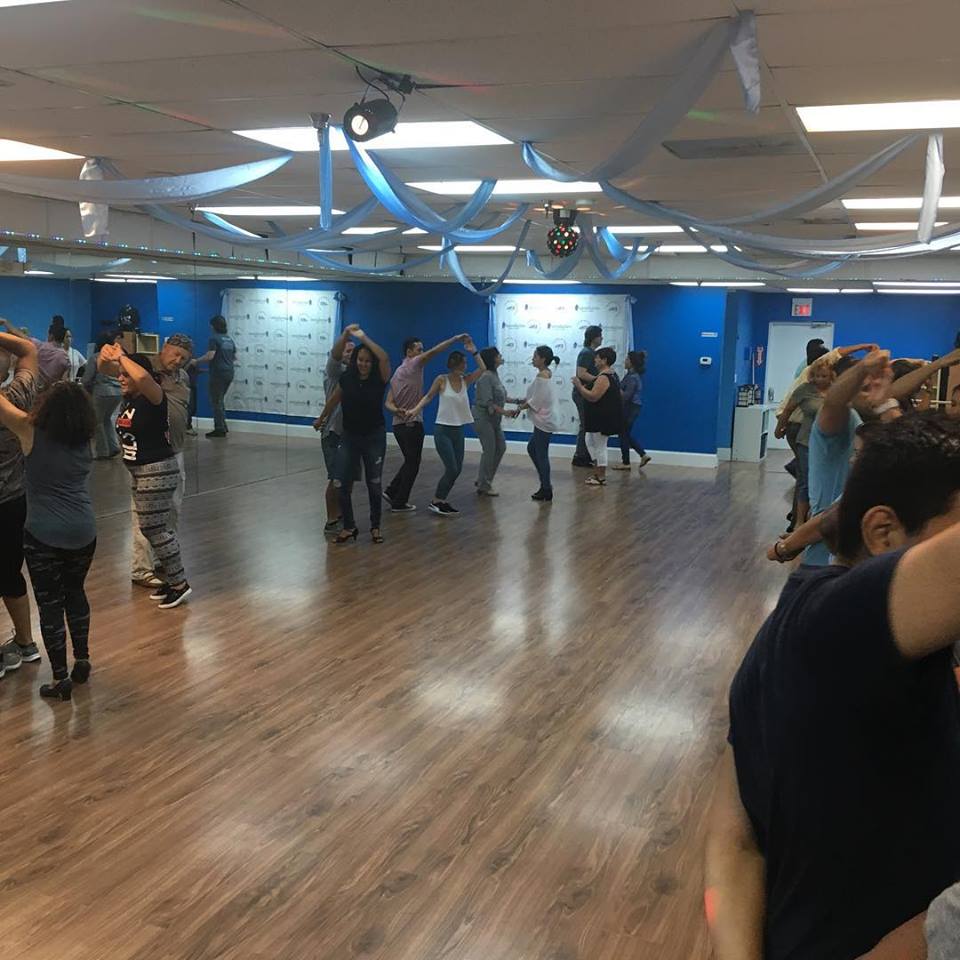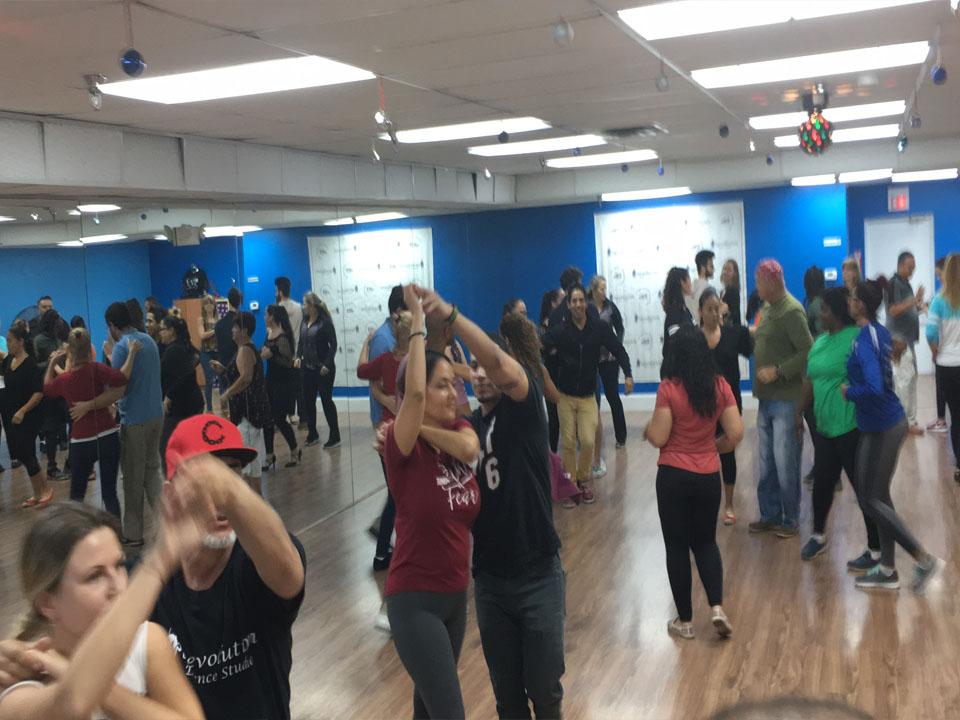Salsa is a Latin dance that was first popularized in the United States in the 1960s in New York City. Salsa is an amalgamation of Cuban dances, such as mambo, pachanga, and rumba, and American dances, such as swing and tap.
It was primarily developed by Puerto Ricans and Cubans living in New York in the late 1960s and early 1970s. Different regions of Latin Dance and the United States (including countries in the Caribbean) have their own distinct salsa styles, such as Cuban, Puerto Rican, Colombian, and New York styles. Salsa dance socials are commonly held in nightclubs, bars, ballrooms, restaurants, and outside, especially when part of an outdoor festival.
Salsa’s tempo ranges from about 150 bpm (beats per minute) to around 250 bpm, although most dancing is done to music somewhere between 160 and 220 bpm. The basic Salsa dance rhythm consists of taking three steps for every four beats of music.
The two main styles we teach a Nuevolution Dance are LA Style (Salsa On1) & NY Style (Salsa On2)
Los Angeles style salsa (LA style) is danced “on 1,” where dancers break forward on the first beat of the music, in contrast to New York style, which is danced on 2. LA-style salsa is danced in a line or “slot” with dancers exchanging positions throughout the dance, unlike Cuban salsa, which is more circular.
The two essential elements of this dance are the forward-backward basic step and the cross-body lead. In this pattern, the leader steps forward on 1 and steps to the right on 2-3 while turning 90 degrees counter-clockwise (facing to the left), leaving the slot open. The follower then steps straight forward on 5-6 and turns on 7-8, while the leader makes another 90 degrees counter-clockwise and slightly forward, coming back into the slot. In total, the couple turned 180° with the follower and leader switching places.
The “Vazquez Brothers” (Luis Vazquez, Francisco Vazquez, and Johnny Vazquez) are credited for the early development and growth of LA Style. Luiz Vazquez was the co-founder of LA’s first salsa dance team, Salsa Brava. The Vazquez Brothers drew influence from stage dances such as tap dance and helped develop the LA style’s reputation for flashy moves and acrobatics.
Other prominent figures in LA-style salsa include salsa promoter Albert Torres, who created the LA Salsa Congress, the first salsa congress in the United States, and for many years one of the most significant salsa events in the world. Later dancers such as Alex Da Silva, Christian Oviedo, and Liz Lira, are also credited with developing the LA style of dancing as we know it today
“On 2” style salsa originated in New York and is often referred to as New York style. It is a linear form of salsa, where dancers dance in a slot, similar to LA-style salsa. Unlike other styles of salsa, however, the New York style is danced on the second beat of the music (“on 2”), and the follower, not the leader, steps forward on the first measure of the music. There is also often a greater emphasis on performing “shines,” in which dancers separate themselves and dance solo with intricate footwork and styling— a phenomenon that likely originates from Swing and New York Tap.
One of the most influential figures in New York style salsa is Eddie Torres (known as “the Mambo King”), who is credited with helping to formalize the on2 salsa timing (based on mambo) and helping to popularize it by teaching it in dance studios in New York and through early instructional tapes.
New York-style salsa emphasizes harmony with the percussive instruments in salsa music, such as the congas, timbales, and clave, since many or all of those instruments often mark the second beat in the music.


